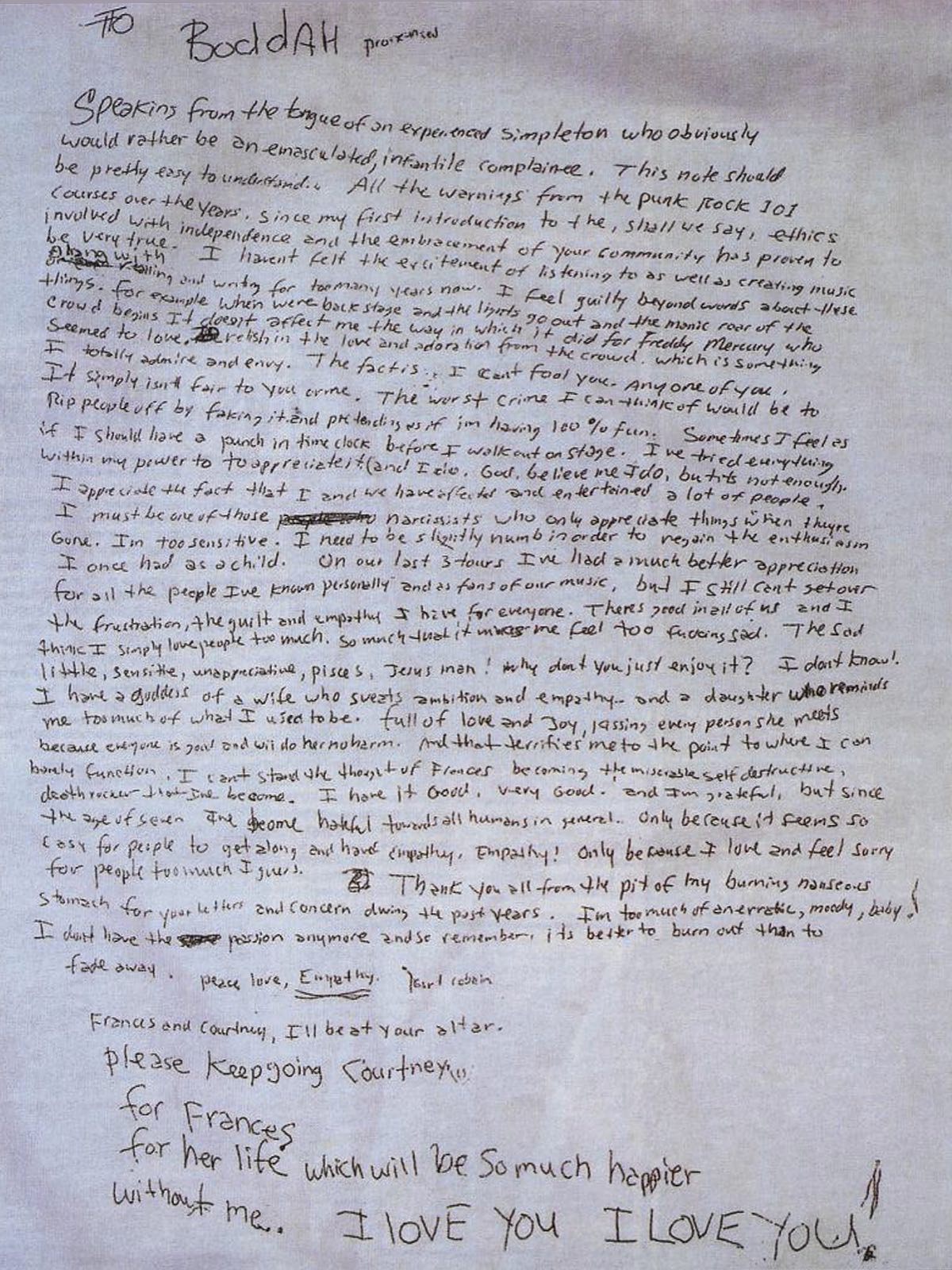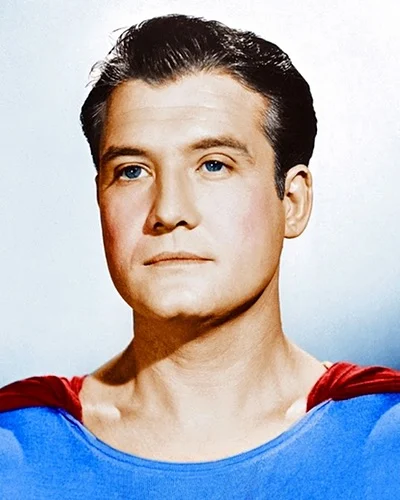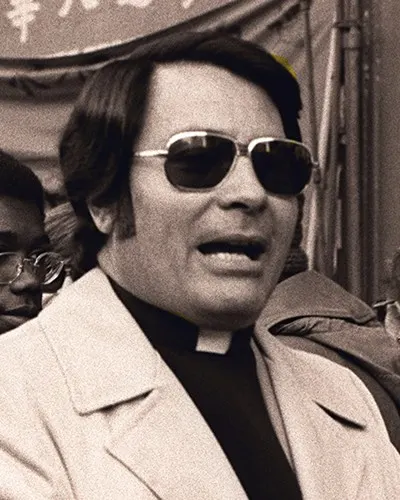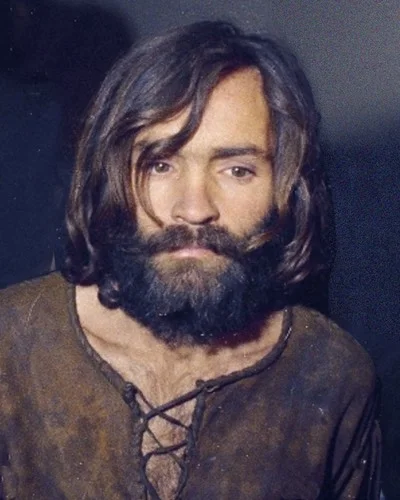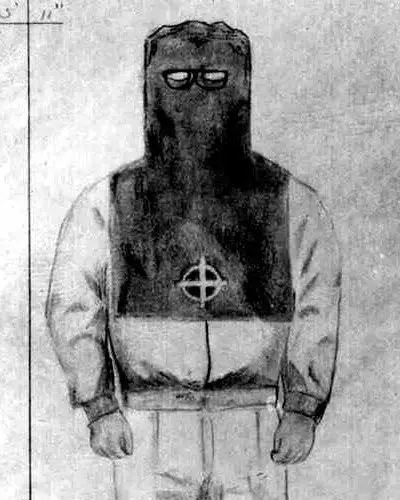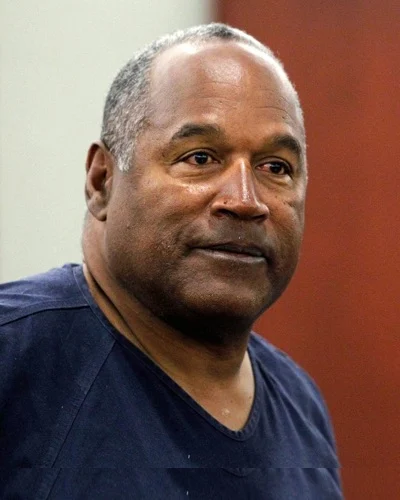It was more than just a life that ended on April 8th, 1994, it was the voice of a generation. Kurt Cobain’s death robbed the outsiders and the alienated of their spokesman, and the world of one of its great musicians.
The news that the frontman of the influential grunge rock band Nirvana had apparently killed himself with a shotgun blast to the head reverberated around the world. Few bands had had such a seismic effect on the music industry, and few ended with such shocking finality.
The news was so devastating to some fans that it inspired a wave of tragic copy cat suicides. Others reacted with disbelief — why would the lead singer of the biggest rock band on the planet, idolised by millions of fans, want to take his own life?
Many of Kurt Cobain’s friends and colleagues say they had no idea he was suicidal, indeed he had recently been cured of a chronic stomach complaint and was feeling more positive than he had in years. Yet Cobain’s wife, fellow musician Courtney Love, seemed to be unsurprised by the news.
She had long worried about Cobain’s state of mind and told the media that the singer was suicidal. In the days before his body was found, Cobain had seemingly gone missing from a drug rehab center, and a worried Courtney Love hired a private detective, Tom Grant, to try and find him.
Grant never did find Kurt Cobain. On April, 8th, the singer’s body was found by an electrician called to Kurt’s Lake Washington home to install a security system. He was laying on the floor in a room above the garage, the shotgun that killed him resting in his arms.
He was just 27 years old, earning him the dubious distinction of entry into the ’27 Club’, alongside other famous musicians like Jimi Hendrix, Janis Joplin and Amy Winehouse, all who died at that age.
The Seattle Police hastily declared the death a suicide, before the circumstances had even been properly investigated. According to the police, Cobain had taken a massive overdose of heroin, then committed suicide by shooting himself in the mouth with a 20 gauge shotgun.
Nearby, what was labelled as a suicide note was found speared to a plant pot with a red biro. The note does not mention suicide and mainly reads like a farewell to the music industry. At the bottom of the note, Cobain says goodbye to Courtney and their daughter Francis Bean, saying they would be better off without him.
But was this part actually written by Cobain at all, or added by someone else? The 4 lines at the bottom certainly look different to the rest of the note and appear to have been added later, some suspect by a different author.
That somebody was keen to push the idea the death was a suicide was obvious by the sheer number of false stories that started to appear in the press. One widely reported claim was that Cobain had barricaded himself into the greenhouse, locked the door from the inside and wedged it shut with a chair.
None of this was true, but it gave the overwhelming impression that Cobain must have committed suicide. Even a line from the suicide note, known only to the police, Tom Grant and Courtney Love, appeared in the media, reading — “I can’t live my life like this any longer”.
But there was a big problem with this quote — it is not in Cobain’s note. It appears to have been fabricated in order to reinforce the idea the singer had killed himself. Courtney Love was also telling the media that an accidental overdose Cobain had had in Rome the previous month was actually an unsuccessful suicide attempt.
By now, Tom Grant had become suspicious that his client was deliberately planting the false stories in the media to try and manipulate the news agenda. But why was Courtney so keen to push the idea that Cobain was suicidal?
Right from his first meeting with Love, before Kurt’s body had been discovered, Grant found her behaviour strange. In dozens of phone calls between the pair, all of which Grant recorded, she repeatedly lies to the detective.
Despite professing worry over his ‘suicidal’ state, Love told Grant she had business in LA during the period Kurt was missing, which meant she was unable to travel back to Seattle to help find him. When Tom Grant mentioned this to Love’s showbusiness attorney Rosemary Carrol, she told the detective that Love — “didn’t have any business in LA!”
Grant also discovered Kurt had left Courtney and was planning to divorce her. Because the pair had a prenuptial agreement, Love would have ended up with little or nothing from the divorce. But with Cobain dead, and Love his widow, she inherited an estate that could potentially be worth hundreds of million of dollars.
Rosemary Carroll, who knew Kurt Cobain very well told Grant that not only was he not suicidal but that the supposed suicide note found near his body had clearly been written by someone else. Carrol even produced a sheet of paper she had found in Courtney’s possession on which someone had practised handwriting very similar to that on the note.
By now Tom Grant suspected that Love may have actually murdered Cobain, a suspicion bolstered by leaked details from the autopsy report. Grant discovered that the amount of heroin Cobain had injected was so huge that it represented more than 3 times the lethal dose, even for the most hardened of addicts.
Forensic pathologists who have discussed the case in the media feel that such a dose would immediately have rendered Cobain unconscious, making it impossible for him to have then shot himself.
It was clear that there was something wrong with the official suicide verdict. Could somebody else have forcibly injected Cobain with a huge dose of heroin? And did someone else pull the trigger on the shotgun?
Evidence For
Suicidal
It’s not uncommon after a suicide for the friends and families of the victim to express disbelief. The suicidal are often able to disguise their intentions even from the closest of loved ones.
However, two factors cast doubt on the idea that Cobain was suicidal. Far from been the tortured and gloomy depressive of popular legend, those who knew him best describe the singer as just as likely to be goofing around than angst-ridden.
Cobain’s playful, often silly sense of humour is clearly evident in many of the interviews he gave, especially those in the years leading up to his death. He would often banter with the audience at his gigs and his journals are full of absurd, whimsical jokes and stories.
That sense of humour was also evident in Nirvana’s songs. Although renowned for their dark and introspective lyrics, Cobain would always say many of the band’s songs, including the bleak sounding ‘I Hate Myself and Want to Die’ from the In Utero sessions, were actually intended to be jokes.
None of this means Cobain could not have committed suicide, and there are even those who believe he may have been bipolar, which is regarded as a major suicide danger sign. But for many of those who knew him best in the year leading up to his death, Cobain was a man who looked happier and more contented than he had for years.
During his time in Nirvana, the main source of unhappiness for Kurt Cobain was not mental but physical. For years, he had been plagued by a chronic stomach problem that would often be so debilitating it would leave him nauseous and unable to eat properly for days on end.
Cobain had spent years consulting dozens of doctors in an attempt to diagnose the problem. He would even say his heroin use started in part as an attempt to ease the pain caused by his stomach.
But in 1992, doctors finally found what had been causing the ailment. A vagus nerve close to his stomach had become pinched and inflamed due to Cobain’s scoliosis. Once properly diagnosed, and given the correct medication, Cobain’s life was transformed.
In an interview in 1993, the singer stated how he was finally free of the debilitating condition — “My stomach isn’t bothering me anymore. I’m eating. I ate a huge pizza last night. It was so nice to be able to do that. And it just raises my spirits”.
Cobain’s change of spirits did not go unnoticed to those around him at the time. Dylan Carlson, one of his best friends, later stated — “Kurt became a new person after that. He stopped retreating into the dark side that everybody came to associate with him and actually seemed cheerful”.
Cobain would state in numerous interviews in 1993 and ’94 how happy he was, and how besotted he was with his young daughter Frances Bean. 6 months before his death he said — “I don’t want to leave behind my wife and child, so I don’t do things that would jeopardise my life. I try to do as little things as I can to jeopardise it. I don’t want to die”.
Talking about his young daughter, Kurt would say in December 1993 — “I’m not going to say a damn word about it being tough; I’m having the best time of my life!”
"I’m not going to say a damn word about it being tough; I’m having the best time of my life!"
Just days before his death, Cobain joined an AOL online Q&A event and left a message for his fans, stating how excited he was to be working on new songs — “Hope you people are ready for a calmer moodier album. Yep, Nirvana’s going back into the studio at the end of the summer. I’m already working on the new songs and artwork for the new album”.
Peter Cleary, another friend of Cobain’s from Seattle, thinks the rumours circulating in the media about Cobain being suicidal were down to Courtney Love. “All the talk only started when Courtney came out after the death and said Rome was a suicide attempt and the media picked up on all her examples of Kurt being suicidal”, he said.
Kurt Cobain overdosed on Rohypnol and alcohol whilst on tour in Rome in March 1994. Only after his death, barely a month later, would Courtney Love claim this was a suicide attempt. Both Cobain, and the doctor who treated him believed the overdose was actually an accident.
Osvaldo Galletta, Cobain’s doctor in Rome does not think it was a suicide, and it was never reported as such at the time. “After he woke up, he told me it was an accident”, he said. “We can usually tell a suicide attempt…this didn’t look like one to me”.
"We can usually tell a suicide attempt…this didn’t look like one to me"
Had Love, as private eye Tom Grant speculated, deliberately spread the false story about Rome been a suicide attempt to reinforce the idea Cobain was suicidal and had killed himself?
Cynical news management is one thing, but what of the curious ‘suicide note’ found near his body after his death? If, as both Tom Grant and Rosemary Carroll believed, this note was phony then it suggests Love’s desire to portray Cobain as suicidal had the darkest of motives.
The Note
The note found near Kurt Cobain’s body is often portrayed as a suicide note, although for the most part it does not read like one.
In the letter, seemingly addressed to Nirvana fans, Cobain speaks at length of his dissatisfaction with the music industry. It is only the last few lines of the note, written in a different style to the rest, that could be construed as the final words of a man about to end his life.
In a spidery scrawl at the bottom of the note it says — “Please keep going, Courtney. For Francis for her life which will be so much happier without me. I LOVE YOU I LOVE YOU!”.
"Please keep going, Courtney. For Francis for her life which will be so much happier without me. I LOVE YOU I LOVE YOU!"
Handwriting experts are divided as to whether this writing is actually by Cobain. Contextually, however, there are problems with the note. Kurt refers to his ‘burning nauseous’ stomach, and talks of his plans to quit the music business.
By the time of his death in April 1994, neither of these things were true. He had been cured of his stomach problems for over a year, and we know from his AOL chatroom message that he was preparing a new album with Nirvana, not planning to quit the business.
It would seem that this note was not contemporary with Cobain’s death, but a year or more older. Had someone taken an old letter Cobain had written when he was at a low ebb and added the writing at the bottom to make it look like a suicide note?
A startling piece of evidence discovered by Courtney Love’s attorney Rosemary Carroll suggested just that. Described as a ‘handwriting practise sheet’, Carrol found the piece of paper inside Courtney’s backpack 2 days before Kurt’s body was found.
The writing that someone, presumably Courtney, had been practising on the sheet bore a resemblance to the dubious bottom part of Kurt Cobain’s so-called suicide note. The obvious suspicion was that Love herself had written this part of the note and tried to pass it off as Kurt’s.
If so, it would not be the first time Courtney Love had faked Kurt’s handwriting. The previous year she had written a letter to Nirvana bassist Krist Novoselic, purporting to be from Kurt and telling his bandmates he was quitting the band.
If Courtney had indeed forged Cobain’s suicide note, it is hard to find a benign motive for her to have done so. Had she, or someone else acting on her behalf, actually shot Cobain and then faked the note to make it appear to be a suicide?
It wasn’t just the suspicious suicide note that suggested this was a very real possibility. Some forensic pathologists who have studied the case think the amount of heroin in the musician’s body was so great he would not physically have been able to shoot himself.
Heroin
According to the official story, Kurt Cobain injected himself with a fatal dose of black tar heroin, tidied away his drugs paraphernalia, picked up his shotgun, placed it in his mouth and pulled the trigger.
The amount of heroin found in Cobain’s bloodstream was, by any standards, absolutely astonishing. His blood-morphine concentration was 1.52mg per litre, which represents more than 3 times the fatal dose for even the most severe of addicts. The effect would have been further exacerbated by his low body weight and the Diazepam in his system.
The King County Coroner, who processed Cobain’s case, were stunned by the figures. They represented the highest ever recorded heroin overdose in the county’s history. Could he really have removed his tourniquet, packed away his drug kit and then picked up a shotgun and shot himself after having taken such a huge overdose?
Canadian chemist Roger Lewis gathered together dozens of toxicology studies regarding drug overdoses to try and find comparable cases. Of the 1526 heroin deaths he found, only 26 had drug levels as high as Cobain and all of them either died instantly or were immediately incapacitated, usually found with the syringe still in their bodies.
In 2014, the Seattle Police confirmed that Cobain had indeed taken a huge lethal overdose, but argued his tolerance levels were so high he was able to remain conscious long enough to shoot himself. If true, this would make Cobain’s case virtually unique in the medical literature.
However, it is accepted that tolerance levels amongst drug addicts are not particularly well understood, so it's hard to make any definite claims one way or the other about how long Cobain could have remained conscious. A more fundamental problem is the relationship between heroin overdoses and suicide itself.
“No study I know of has correlated the use of heroin with suicide”, said Dr Vincent DiMaio, one of America’s most senior forensic pathologists. Dr Cyril Wecht, the former president of the American Academy of Forensic Science who has studied the Cobain case for 20 years, agrees that this form of suicide is highly unusual.
"No study I know of has correlated the use of heroin with suicide"
“I cannot think of a case, where I have had someone inject himself with a large amount of heroin and then proceed to kill himself, it just doesn’t make sense”, he said. “Why would he shoot himself before the drug had had chance to take effect?”
The point Wecht is making is at the heart of the whole case. Even if Cobain had remained conscious after taking the biggest overdose in King County history, he would have been experiencing or anticipating a huge high. It seems deeply unlikely that he would choose that of all moments to shoot himself.
Roger Lewis, whose study of toxicology reports demonstrated the improbability that Cobain could have remained conscious long enough to shoot himself, also looked at hundreds of cases of violent suicides.
As Wecht and DiMaio suggested, there was not a single instance anywhere in the literature of someone taking a large dose of heroin then shooting themselves. The preponderance of evidence suggests that for all intents and purposes this scenario simply does not occur.
Many believe the Seattle Police acted with undue hasty in labelling the Cobain crime scene a suicide, and that their early verdict clouded their judgement and prevented them properly investigating alternative scenarios.
According to Vernon J. Geberth, a retired Lieutenant-Commander of the New York City Police Department, this is not uncommon. Geberth wrote a standard textbook on crime scene protocol and cites dozens of examples of murders been staged as suicides going undetected due to lazy police work.
“I have personally investigated many such cases and the truth of the matter is that initially; the cases did look like suicides”, he stated. “The investigator cannot assume anything as a professional law enforcement officer”, but, he said — “Without a doubt investigators take short-cuts when they hear the word suicide”.
Shell location
When Kurt Cobain’s body was found, he was laying flat out on the floor of the greenhouse with a shotgun resting on top of his body. The shotgun was upside down, and Cobain’s left hand was clutching the barrel.
As Cobain was found holding the gun in an inverted position, the exit chamber for the shell pointed to his right side. The shell of the shot that killed him was, however, found to the left side of Cobain’s body.
Had the shotgun actually been carelessly placed in Cobain’s hand after his death in order to make it appear he had pulled the trigger himself? The Seattle Police explained away the discrepancy by suggesting the recoil of the shotgun had caused it to rotate 180 degrees after Cobain fired it, but this appears questionable.
Cobain had deliberately purchased a low power 20 gauge shotgun to act as a deterrent to intruders, rather than to actually kill anyone. The shotgun was known to have a very low recoil, and was actually so underpowered that even though it had gone off in his mouth the shot did not exit his head.
Nikolas Hartshorne, who performed Kurt Cobain’s autopsy, believes the musicians left hand was tightly gripping the barrel because of phenomena called ‘Cadaveric Spasm’, which causes instant rigor mortis upon the moment of death. This indicated the gun was probably found in the same position it was fired.
Whilst on the face of it this supports the suicide verdict, it could equally be that someone placed the gun in Cobain’s hand then fired it from the same position it was found. Such a scenario might also explain the incongruous location of the shotgun shell.
It is feasible that the shell was ejected towards the right but deflected off some object causing it to land towards the left of Cobain’s body. Whilst there is nothing at the crime scene that could have done this, the possible presence of one or more people around Cobain’s body when the gun was fired could have caused the deflection.
Evidence Against
Suicide Risk
Although a lot of the evidence that indicates Cobain had committed suicide is tainted by Courtney Love’s media spin and manipulation, there is still a case to be made that the singer was at high risk of killing himself.
Cobain’s cousin Bev Cobain has claimed the star had bipolar syndrome, a type of clinical depression characterised by extreme mood swings. It is well documented that alongside his bursts of creative and emotional energy, Cobain would have periods where he would be lethargic and withdrawn, both key indicators of the disorder.
Dr. Kay Redfield Jamison, a leading expert on bipolar syndrome, cites Kurt Cobain in her 2004 study ‘Cultural Legends with Mental Illnesses’, and many of Nirvana’s lyrics contain obvious references to depression. The song Lithium, both musically and lyrically, appears to be about bipolar syndrome, and Lithium itself is one of the major drugs for treating the disease.
Bipolar syndrome is regarded as a major risk factor for suicide, especially when combined with alcohol and drug abuse. Studies have shown that 25–50% of bipolar suffers attempt suicide at least once in their life and there are indications, even discounting the disputed Rome overdose, that Cobain had tried to kill himself before.
In a tape recorded in 1988, Kurt describes an early suicide attempt — “I walked down to the train tracks and laid down and put two big pieces of cement on my chest and legs and waited for the 11 o’clock train. And the train came closer and closer and closer. And it went on the next track beside me instead of over me”.
There was also a history of mental illness and suicide in Cobain’s family. Two of his great uncles shot themselves and his great grandfather stabbed himself in front of Kurt’s grandmother. Cobain himself even had a direct encounter with suicide as a child when he and his friends found a classmate who had hung himself outside of their school.
Kurt would often talk about his dark and nihilistic feelings when he was a teenager and suicide, in particular, appeared to occupy him. Those obsessions would continue into adulthood, although he would often dismiss them as jokes.
Even after achieving fame, riches and adulation with Nirvana, many of those that knew Cobain describe a deeply troubled man racked with feelings of inadequacy, alienation and anxiety. Tellingly, those who spent more time with Cobain than anyone else in the years before his death — his Nirvana band mates, all believe he committed suicide.
Krist Novoselic, Nirvana’s bassist, recalled seeing Kurt days before his death. “He was really quiet. He was just estranged from all of his relationships. He wasn’t connecting with anybody”.
"He just wanted to get fucked up into oblivion. There was no talking to him. He wanted to escape. He wanted to die, that was what he was going to do"
Novoselic was particularly disturbed by Cobain’s mental state and reliance on drugs at the time - "He just wanted to get fucked up into oblivion. There was no talking to him. He wanted to escape. He wanted to die, that was what he was going to do".
Brett Morgan, the director of recent Kurt Cobain documentary ‘Montage of Heck’, thinks the musician killed himself because of the breakdown of his relationship the Courtney Love. “He thought his wife cheated on him, and her and Frances were all he had”, he said. “And so when that was broken in his mind, there was this sense of humiliation. Kurt Cobain died of a broken heart”.
Despite the obvious problems with the case, Kurt Cobain possessed many of the classic danger signs for suicide — he had bipolar syndrome, was in the middle of a breakup, was addicted to drugs and had a family history of mental illness. It is not entirely surprising that many of his closest friends believe he probably did kill himself that dark day in April 1994.
“It’s better to burn out than to fade away”. Whether those words, written on the note found near Kurt Cobain’s body, referred to his desire to leave the music industry, or his desire to leave the world altogether, will never be known.
But either way they seem apt. Like the other members of the 27 club, Kurt Cobain’s legend is fixed in time. His immense standing as a musician will forever be untarnished and dimmed by the ravages of age, never fading away.
Was Nirvana frontman Kurt Cobain’s death, officially ruled a suicide, actually murder? - add your comment below







